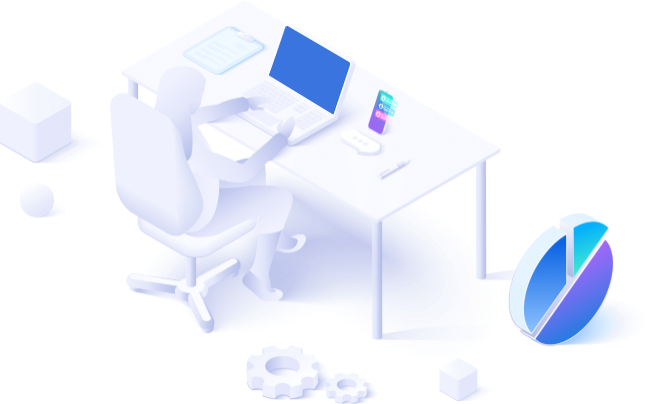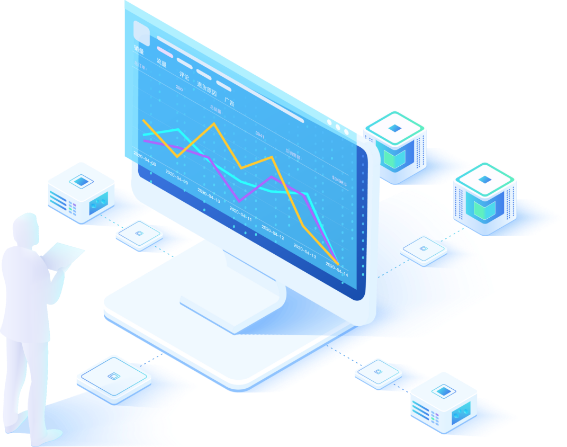Industry Solutions


The healthcare industry has always been a critical social domain, facing diverse and complex needs. With the growth of the population and the aging trend, medical institutions are facing more and more patients, including outpatients, inpatients, emergency cases, and users of remote medical services. The healthcare industry provides a wide range of medical services, including diagnosis, treatment, surgery, drug delivery, health counseling, etc. Different services may require different server resources and network bandwidth to support. The healthcare field generates a large amount of patient medical records, images, and data, which need to be stored, backed up, retrieved, and shared to support clinical decision-making, research, and legal compliance. The healthcare industry requires strict data security and compliance standards to protect patient privacy and comply with regulations. Load balancing can be combined with security policies to ensure encryption, authentication, and audit functions for data transmission and storage. The rise of remote medical services, electronic health records (EHR), and remote diagnosis technologies has increased network load, requiring load balancing to manage communication and data transmission between remote patients and doctors.
In summary, the complexity and diversity of the healthcare industry make load balancing crucial. It not only ensures timely and high-quality medical services for patients but also helps improve the efficiency and availability of medical institutions while meeting data security and compliance requirements. Load balancing in the healthcare field will continue to have a positive impact on the lives and health of patients.
Medical institutions need to cope with the constantly increasing patient flow, including outpatient appointments, inpatients, emergency cases, and users of remote medical services. An efficient load balancing mechanism is needed to distribute system traffic evenly to different servers and resources to reduce waiting time and improve patient satisfaction. Emergency medical tasks such as emergency rescue, surgery, and monitoring have very high real-time requirements that need to ensure low-latency information transmission and data query to support timely decision-making and medical intervention. Medical institutions provide various medical services, including diagnosis, treatment, drug management, imaging, and laboratory testing. Different services may require different types of server resources and network bandwidth to support, load balancing needs to adjust resource allocation according to demand. Medical institutions generate a large amount of patient medical records, image data, and laboratory results. This data needs efficient storage, retrieval, backup, and sharing to support clinical decision-making, research, and compliance. Remote medical services: The widespread use of remote medical services, electronic health records (EHR), and remote diagnosis technologies has increased network load. Load balancing is also required to ensure stable communication and data transmission between remote patients and doctors to ensure connection stability and data privacy. At the same time, the healthcare industry requires strict data security and compliance standards to protect patient privacy and comply with regulations. Load balancing needs to be integrated with security policies to ensure encryption, authentication, and audit functions for data transmission and storage. Medical business systems require high availability to ensure uninterrupted medical services including redundant lines and servers to cope with hardware failure or network issues.
Based on the above demand analysis, load balancing systems can play a critical role in the healthcare industry not only to help provide efficient medical services but also to ensure patient safety and privacy while meeting data management and compliance requirements. In the healthcare industry, load balancing is an essential component of healthcare information technology infrastructure that has a profound impact on patient health and quality of care.


As a company focused on intelligent application delivery solutions for many years, Hongji Technology has been helping users in various industries solve network application availability problems such as network application performance problems and security issues. For the healthcare industry, in order to meet the needs of patient growth, diversified services, and data management requirements, we have developed our own solution to help users optimize business systems for improved availability.
Hongji's SuperAD series of application delivery products help users establish high-performance server clusters and distribute traffic through a variety of load balancing algorithms based on traffic types and request types to ensure even resource allocation and high availability using automatic health checks to promptly remove faulty nodes. For multi-regional branch medical institutions, a global load balancer is used to optimize traffic distribution on multiple paths between different locations ensuring patients receive low-latency and high-availability services across different geographical locations reducing waiting time for data transmission. Application-level load balancing is used to route traffic based on request types to the appropriate server pool. For example, diagnostic image services and real-time video sessions can have dedicated server pools separately.
SuperAD series application delivery products integrate security measures such as Web Application Firewalls (WAF) and SSL encryption technology to protect the privacy and security of patient data from malicious traffic entering the healthcare network. Real-time monitoring and analysis tools are introduced for monitoring server performance, traffic load, and security events. This helps detect problems in a timely manner while supporting capacity planning and performance optimization.
Compliance and audit: Ensure compliance with regulatory requirements in the healthcare industry. Record all data access and operations for audit and compliance checks. This comprehensive load balancing solution will help healthcare institutions provide efficient, safe, and high-quality medical services while meeting the needs of patients and protecting the privacy and integrity of medical data. This is a viable way for the healthcare industry to face growing challenges.

The system adopts multi-core technology, which greatly improves the processing performance of the SuperAD series application delivery devices. At the same time, the product uses a dedicated super parallel processing architecture, which greatly improves the processing performance of L4-L7 and meets users' current and future expansion needs.

The product fully supports virtualization technology, including device virtualization and virtualization operating systems such as Vmware and KVM. Through the pAPI and eRule interfaces provided by the system, it works well with OpenFlow and SDN to smoothly integrate ADC into the SDN network.

The product integrates multiple functions into one: it can achieve local server load balancing, link load balancing, and also implement global load balancing for multiple data centers. For some special and complex functional requirements, the system supports programmable script eRule, which can deeply customize user needs, which is difficult for many load balancing devices to achieve. These functions provide the device with high cost performance.

The system supports a rich load balancing function for L3-L7 application servers. Through deep analysis of application protocols, it can provide comprehensive application load balancing and content exchange capabilities. It also has a comprehensive application health check mechanism to timely diagnose servers or applications that are abnormal. The system has a cluster mode of primary-backup and multi-device groups to ensure the stability and continuity of enterprise applications.

The system can adopt encryption methods such as HTTPS and SSH for network management, avoiding the security risks caused by direct access to devices in plain text communication. The system also incorporates DDoS attack protection functionality. It can provide SSL decryption and encryption, and integrated with CA and client certificates to formulate flexible policies based on certificate identity for access and authorization.